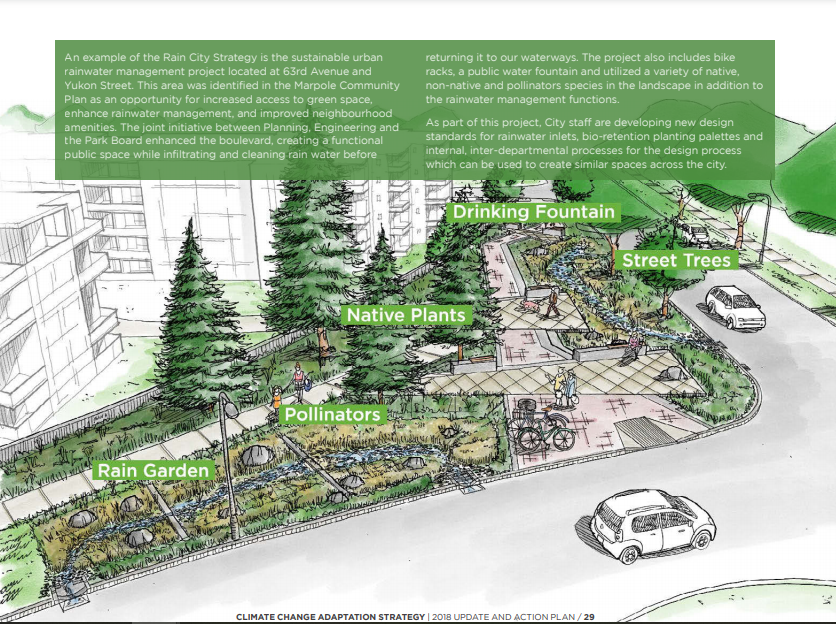Understanding and Assessing Impacts
The City of Vancouver reviewed impacts and the 2012 risk assessment based on new climate projections and observed events and impacts. Based on the new climate projections, a summary of climate impacts/risks is provided and divided amongst human, natural, and the built environment systems. The main climate impacts affecting the City include hotter, drier summers (including higher frequency and intensity of heat waves); warmer, wetter winters (including higher frequency and intensity of rain and storms), sea level rise and an overall increase in extreme climate-related hazard events. Together, these impacts have implications across human, natural and the built environment systems. For example, hotter, drier summers are expected to increase health and safety risks associated with extreme heat and air quality events, create water supply shortages in late summer, and decrease the thermal comfort in buildings in the summer due to lack of air conditioning (human systems); increase tree loss due to drought, cause a change in species composition and ecosystem structure, and cause impacts to water quality which is affected by rising temperatures (natural systems); and, new and existing buildings may be maladapted as the climate changes in terms of thermal comfort, water ingress, wind durability, rain on snow loads, etc., and cause increasing stress on green infrastructure in the summer time (built environment). Additional impacts are included for each climate risk/driver.
